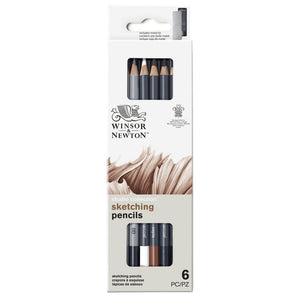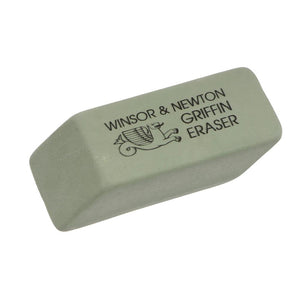
Alanna Hernandez is a largely self-taught coloured pencil and wax pastel artist. Originally from Cape Cod, USA, she graduated from the University of Massachusetts Amherst in 2010, where she earned a BA in Middle East Studies. After graduating she continued her art practice while training in yoga and meditation. Her work is a culmination of these facets, and her abstract pieces explore bodily trauma and human relationships through meditative ribbon-like forms. Hernandez currently resides in Union, Maine.
When did you decide you wanted to be an artist?
I have always known, on some level, that I wanted to be an artist. Art has always been how I’ve processed the world and my feelings. But it took some learning and unlearning in my mid-twenties to give myself permission to get serious about my art practice. I don’t come from a family of artists or anything like that, so I had to find my own examples of artists whose lives and careers I admired and could emulate.

Can you tell us a bit about your work?
I make abstract coloured pencil drawings, mostly on wood panels. I am enamoured with a ribbon form that I’ve been working with for years now. I show the ribbons flowing, interacting with and getting interrupted by external objects. I like to show contrasting moments of both tension and flow in the ribbons. To me they represent flow. In their natural state they flow back and forth in an S-shape, usually snaking from top to bottom. The folded and curving forms are reminiscent of bodies and body parts. As I’m creating new compositions, I’m thinking about how trauma and feelings are stored or felt in our bodies.

Can you tell us about a typical day in the studio?
I have to credit Walking in This World, a book by Julia Cameron that was a follow-up to her handbook The Artist’s Way, with making me a consistent morning-journaller. I read it as part of a book club, and in it she encourages you to take up several habits to support your practice. The one that stuck with me was doing three pages of journalling every morning to free your mind of excess and unnecessary thoughts before you begin your day. And I have a lot of those! I also always allow myself to start my day with drawing. In my studio the light is at its best in the morning, and I want to always use that light for my work. I save emails, admin and various shipping tasks for the afternoon.

How did you decide that coloured pencils are the medium for you?
It was a practical choice for me. I was working in education full-time, and I wanted to use a medium that didn’t take too much time to set up or clean up so that I could maximize my time working on the actual art. But I also seriously love drawing. I draw compulsively.
Why do you choose to work on wood as a surface?
I was trying to find a way to show drawings without framing them and putting them under glass. And I love my drawings to have texture. I started experimenting with the pencils on wood and thought the effect was soft, peaceful and interesting.
How do you make colour decisions in your work? Do you have a favourite colour?
I limit my colour palette by using only coloured pencils with the highest lightfast ratings. I choose colours based a little bit on colour theory, but mostly intuition. I like to do multiple colour studies before I start a final piece. I have many favourite colours that show up in my work again and again. They feel familiar to me. A few of them are Cadmium Red, Indigo Blue and four specific shades of purple that range from brownish to greyish.
What tool do you have in your studio that we would be surprised to learn that you use?
Maybe people would be surprised to learn that I use sandpaper to erase marks that I don’t want. I don’t use it super often – I can usually use a regular eraser for most things, and sandpaper does change the texture of the surface. But if there’s a really prominent mark that isn’t supposed to be there I will sand it away.

How does yoga and meditation influence your work?
I practice yoga and meditation a few times a week, and it helps me connect to my body and to spirituality. These connections are vital to my work, and are where I find inspiration. Yoga and meditation remind me that, much like the ribbon I draw, I have an original self and a natural state. The events of life and your own thoughts can interrupt and disconnect you from this self, but yoga helps you continuously reconnect.
Do you think being a self-taught artist is more beneficial than going to art school?
Being self-taught has mostly felt like an obstacle to overcome, but I’ve met other artists who say the same thing about going to art school. I just own it now, and don’t stress about it anymore. There are pros and cons to both. In my experience, when you are self-taught, you have a lot more freedom to work on the things you’re excited about. But you have to be very driven to work on foundational skills, learn art history, build your resume and build a network of artist peers and art professionals.

What advice would you have for an artist just starting out?
This is advice that I’ve gotten that has worked for me… Read books and listen to music to stay inspired. Use social media sparingly (I need to take my own advice here!). Meet lots of other artists. But mostly, focus on your work and opportunities will come.
All images are courtesy of the artist.
https://www.alannakh.com/















![WN PWC KAREN KLUGLEIN BOTANICAL SET [FRONT]](http://www.winsornewton.com/cdn/shop/files/136444.jpg?crop=center&v=1740654068&width=20)
![WN PWC KAREN KLUGLEIN BOTANICAL SET [OPEN 2]](http://www.winsornewton.com/cdn/shop/files/136447.jpg?crop=center&v=1740654068&width=20)
![WN PWC ESSENTIAL SET [FRONT]](http://www.winsornewton.com/cdn/shop/files/137583.jpg?crop=center&v=1740762356&width=20)
![WN PWC ESSENTIAL SET [OPEN]](http://www.winsornewton.com/cdn/shop/files/137581.jpg?crop=center&v=1740762356&width=20)
![W&N GALERIA CARDBOARD SET 10X12ML [B014096] 884955097809 [FOP]](http://www.winsornewton.com/cdn/shop/files/138855.jpg?crop=center&v=1740761853&width=20)
![W&N GALERIA CARDBOARD SET 10X12ML 884955097809 [OPEN]](http://www.winsornewton.com/cdn/shop/files/138856.jpg?crop=center&v=1740761853&width=20)

![W&N PROMARKER 24PC STUDENT DESIGNER 884955043295 [FRONT]](http://www.winsornewton.com/cdn/shop/files/78674_d4d78a69-7150-4bf4-a504-3cb5304b0f80.jpg?crop=center&v=1721326116&width=20)

![W&N PROFESSIONAL WATER COLOUR TYRIAN PURPLE [SWATCH]](http://www.winsornewton.com/cdn/shop/files/136113.jpg?crop=center&v=1724423390&width=20)
![W&N WINTON OIL COLOUR [COMPOSITE] 37ML TITANIUM WHITE 094376711653](http://www.winsornewton.com/cdn/shop/files/9238_5073745e-fcfe-4fad-aab4-d631b84e4491.jpg?crop=center&v=1721326117&width=20)
![W&N WINTON OIL COLOUR [SPLODGE] TITANIUM WHITE](http://www.winsornewton.com/cdn/shop/files/131754_19b392ee-9bf6-4caf-a2eb-0356ec1c660a.jpg?crop=center&v=1721326118&width=20)